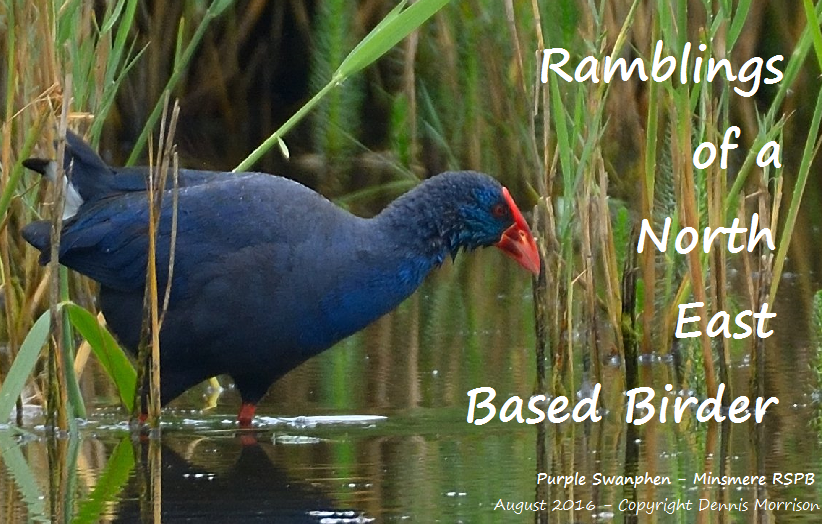Caspian Gull is not a particularly common bird in the North of England, infact they are still fairly rare everywhere in the North . They are still a description species in Durham and therefore still a fairly rare bird, though this year Seaton Common and Cowpen tip have been reliable spots to catch up with the species. They can be tricky especially in adult plumages but they can be straight forward when in 1st winter plumage, I haven't seen all that many but have learnt a lot from the individuals I have seen.
 |
Caspian Gull - © Mark Newsome
The white head and underbody with barely any visible markings it obvious here, also note the the shawl effect on the nape of this bird which then bleeds partly onto the birds mantle. The small beady eye is evident and a small dark mask is also present encircling they eye. The grey mantle feathers with dark centres is obvious in this photo and this feature is particularly useful to look out for when trying to pick out a first-winter Caspian Gull. Finally the long and obvious parallel sided bull is evident in this image, compare this to the (presumed 2nd winter?) Herring Gull's bill behind. |
 |
Caspian Gull - © Mark Newsome
You can see that in flight it shows a white head with small dark eye, the shawl effect on the nape can be seen quite well in this high quality image. The axillaries look greyish/white, but this feature is very variable in Caspian Gull and some can show brownish axillaries.
Caspian Gull - © Mark Newsome Compare to the above image and it can be seen how a birds axillaries can change in the field depending upon lighting conditions. But note the very white head, with black beady eye set far forward in the head and the shawl like pattern on the birds neck extending down onto top of mantle.
Caspian Gull - © Mark Newsome You can clearly see the broad and solidly black terminal band on the tail contrasting with the fairly sparsely marked rump/uppertail coverts. Nice contrast between the secondaries and the much paler coverts which creates clear cut black and brown areas on the birds upperwing. Also you can see the grey mantle and scapular feathers with dark centres creating a fairly distinctive appearance. Overall first-winter Caspian Gulls are usually four coloured; white, brown, black, and grey. This is particularly evident when a bird is on the deck, compare this to Herring Gulls which can often look less well defined and don't usually show such a sharp contrast throughout the whole plumage at this age.
I think first-winter Caspian Gulls aren't half nice birds! Especially in first-winter plumage, which in my opinion is the nicest plumage of the species. Thanks to Mark for allowing me to use his images, hopefully my comments might be of some use to some readers. Something I have missed out or you want to add? Leave a comment.....
Until next time, Foghorn out!
|





No comments:
Post a Comment